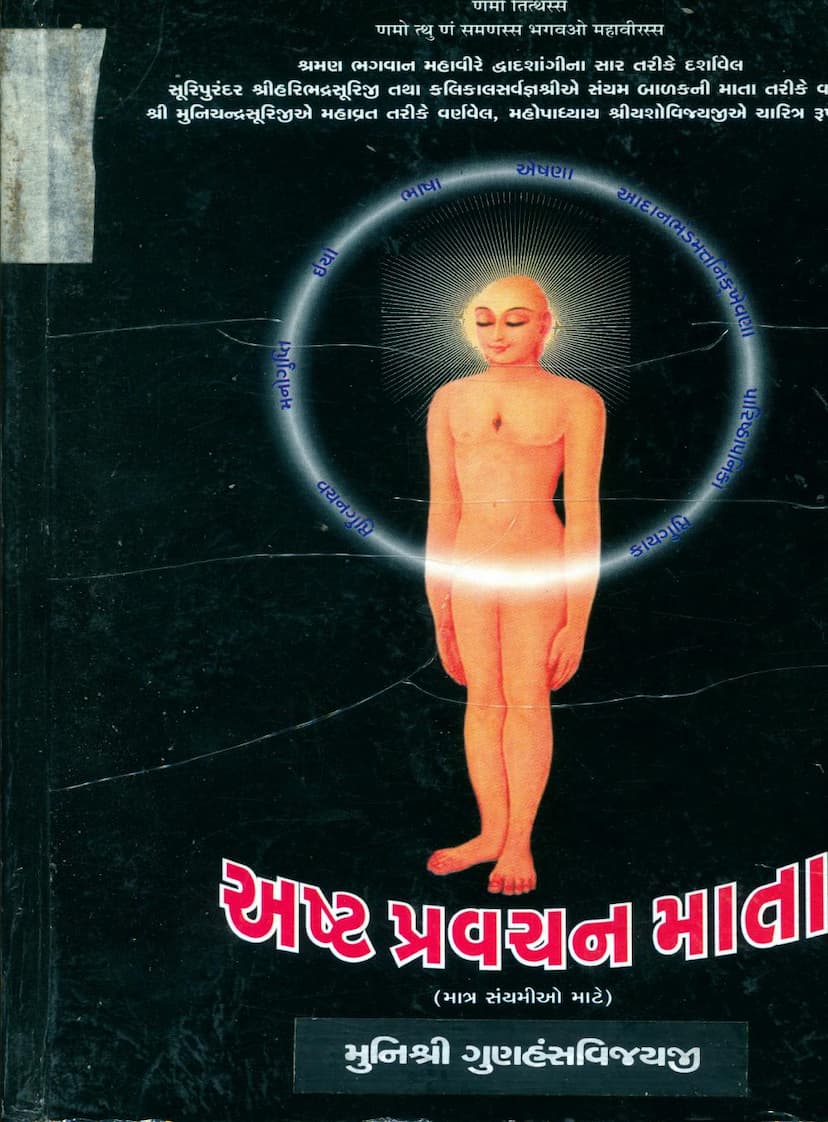Asht Pravachan Mata
Added to library: September 1, 2025

Summary
Here's a comprehensive summary of the Jain text "Asht Pravachan Mata" by Munishri Gunhansvijayji, based on the provided pages:
Book Title: Asht Pravachan Mata (The Eight Mothers of Pravachana) Author: Munishri Gunhansvijayji Publisher: Kamal Prakashan Trust Core Theme: The book focuses on the profound significance of the "Asht Pravachan Mata" (Eight Mothers of Pravachana) within Jainism, which are the three Guptis (continence) and five Samitis (carefulness) that form the very foundation of a monk's virtuous conduct and spiritual journey.
Summary of Key Concepts and Themes:
-
The "Eight Mothers": The central idea is that the three Guptis (Manogupti - control of mind, Vachanagupti - control of speech, Kayagupti - control of body) and the five Samitis (Irya Samiti - carefulness in movement, Deshna Samiti - carefulness in speaking, Eshanana Samiti - carefulness in obtaining alms, Adana Nikshepana Samiti - carefulness in taking and placing, Pratishthapana Samiti - carefulness in relieving oneself) are likened to "mothers" for the "child of conduct" (Charitra Balak). These eight principles are described as the fundamental builders and nurturers of a monk's spiritual character.
-
Analogy of Motherhood: The text draws a powerful analogy between a mother's care for her child and the role of these eight principles in nurturing the monk's spiritual development. Just as a mother guides her child away from harmful actions and instills good conduct, these eight "mothers" guide and protect the monk from transgressions, both external and internal, leading to the refinement of their character.
-
Foundation of Jain Conduct: The Guptis and Samitis are presented not merely as rules but as the very essence of true monasticism. They are the source of all spiritual progress, compassion, and purity in a monk's life. Their rigorous adherence is crucial for karmic cleansing and ultimate liberation.
-
Distinction from Worldly Conduct: The text emphasizes that while the worldly man also adheres to certain principles, his adherence is often driven by self-interest, fear of punishment, or societal pressure. In contrast, the Jain monk's adherence stems from a deep understanding of spiritual principles, the desire for soul purification, and devotion to the teachings of the Tirthankaras.
-
The Importance of Meticulousness: The book highlights the extreme meticulousness required in observing these principles. For instance, in Irya Samiti, the text details the need for careful observation of the ground before stepping, demonstrating the Jain emphasis on non-violence even at the subtlest level. Similarly, the control over speech (Vachanagupti) and mind (Manogupti) is stressed to prevent harmful actions and thoughts.
-
Guptis as the "Higher Path": The three Guptis are presented as the "Utsarga Marg" (the higher, more direct path to liberation) as they involve the complete cessation or control of activities. The five Samitis are seen as the "Apavada Marg" (the exceptional path) that are followed when specific circumstances necessitate action, but always with utmost carefulness and adherence to principles.
-
The Role of Meticulousness in Nurturing Conduct: The text goes into detail about the practical aspects of observing these principles. For example, the meticulous way a monk must examine the ground, clean utensils, and even consider the impact of their movements on the smallest of lives is highlighted.
-
The Role of the Guru: The importance of a qualified Guru (Gachhadhipati, Acharya) is repeatedly stressed. The Guru's role is not just to impart knowledge but also to guide, correct, and ensure the disciple's adherence to these principles, even when facing difficult circumstances. The text also discusses the crucial role of the Guru in the formation of the disciple's character and spiritual journey.
-
Adapting to Current Times: While revering the ancient prescriptions, the text also implicitly acknowledges the challenges of modern times. It touches upon the difficulties in strictly adhering to all ancient practices due to changing societal structures (like urban living vs. ancient forest dwellings) and suggests a need for practical yet principled application of these teachings.
-
The Ultimate Goal: The overarching message is that the practice of these eight principles is not an end in itself but a means to achieve ultimate liberation (Moksha) and spiritual purity. The rigorous adherence, even in minute details, is presented as a path to self-realization and freedom from the cycle of birth and death.
Publisher's and Author's Context:
- The book is published by Kamal Prakashan Trust, indicating its religious and charitable nature.
- Munishri Gunhansvijayji, the author, is presented as a learned scholar, following in the tradition of great Jain Acharyas like Shri Haribhadrasuri and Shri Hemchandrasuri, who have extensively elucidated these principles.
- The text is dedicated to the concept of "Asht Pravachan Mata" as described by Lord Mahavir himself, and further elaborated by these revered Acharyas.
Overall Impression:
"Asht Pravachan Mata" is a deep dive into the practical and philosophical aspects of fundamental Jain monastic conduct. It aims to provide a comprehensive understanding of the Guptis and Samitis, emphasizing their role as "mothers" nurturing spiritual growth. The book seems to offer guidance for ascetics on how to observe these principles with utmost care and diligence, adapting them to the current times while maintaining their core essence. The author's respect for traditional teachings and his attempt to make them relevant for contemporary ascetics is evident throughout the text.